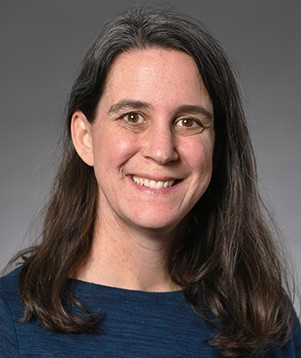
Associate Professor – Marine & Environmental Science
Savannah State University (SSU)
Phone: (912) 358 4097 | Email: coxt@savannahstate.edu | Fax: (912) 358 4600
Assistant Scientific Program Director – U.S. Marine Mammal Commission in Bethesda, Maryland.
Education
Duke University
Ph.D., Ecology
Duke University
M.E.M., Coastal Environmental Management
Research Interests
- Spatial ecology and conservation biology of long-lived marine vertebrates.
- Marine and coastal policy and management.
- Human interactions with marine mammals.
Selected Publications
- Kovacs, C., Curran, M.C., and Cox, T.M. (in press). Where’s that dolphin? Using bottlenose dolphin sightings to study spatial patterns. The Science Teacher.
- Kovacs, C., and Cox, T.M. (in press). Quantification of interactions between common bottlenose dolphins (Tursiops truncatus) and a commercial shrimp trawler. Aquatic Mammals.
- Kovacs, C., Curran, M.C., Cox, T.M. (2013). Using mathematics to conduct social analyses of bottlenose dolphins in science classrooms. Science Scope 36:52-60.
- R. L. Lewison, Soykan, C. U., Cox, T. M., Peckham, H., Pilcher, N., LeBoeuf, N., McDonald, S., Moore, J., Safina, C., Crowder, L. B. (2011). Ingredients for addressing the challenges of fisheries bycatch. Bulletin of Marine Science 87(2): 235-250.
- Bowen, S., Cox, T. M., Curran, C. (2011) What are bottlenose dolphins doing on land? An activity teaching the scientific method through the unique behavior of strand feeding. The American Biology Teacher 73(7): 407-411.
- Cox, T. M., Lewison, R. L., Zydelis, R., Crowder, L. B., Safina, C., Read, A. J. (2007). Comparing effectiveness of experimental and implemented bycatch reduction measures: the ideal and the real. Conservation Biology 21(5): 1155-1164.
- Cox, T.M., T.J. Ragen, A.J. Read, E.E. Vos, and 32 others. (2007). Understanding the impacts of anthropogenic sound on beaked whales. Journal of Cetacean Research and Management 7(3): 177-187
- Cox, T.M. and A.J. Read. (2004). Echolocation behavior of harbor porpoises (Phocoena phocoena) around chemically enhanced gillnets. Marine Ecology Progress Series 279: 275-282.Cox, T.M., A.J. Read, D. Swanner, K. Urian, and D. Waples. (2004). Behavioral responses of bottlenose dolphins (Tursiops truncatus) to gillnets and acoustic alarms. Biological Conservation 115:203-212.
- Cox, T.M., A.J. Read, A. Solow, and N. Tregenza. (2001). Will harbour porpoises (Phocoena phocoena) habituate to pingers? Journal of Cetacean Research and Management 3(1):81-86.
- Kovacs, C., Curran, M.C., and Cox, T.M. (in press). Where’s that dolphin? Using bottlenose dolphin sightings to study spatial patterns. The Science Teacher.
- Kovacs, C., and Cox, T.M. (in press). Quantification of interactions between common bottlenose dolphins (Tursiops truncatus) and a commercial shrimp trawler. Aquatic Mammals.
- Kovacs, C., Curran, M.C., Cox, T.M. (2013). Using mathematics to conduct social analyses of bottlenose dolphins in science classrooms. Science Scope 36:52-60.
- R. L. Lewison, Soykan, C. U., Cox, T. M., Peckham, H., Pilcher, N., LeBoeuf, N., McDonald, S., Moore, J., Safina, C., Crowder, L. B. (2011). Ingredients for addressing the challenges of fisheries bycatch. Bulletin of Marine Science 87(2): 235-250.
- Bowen, S., Cox, T. M., Curran, C. (2011) What are bottlenose dolphins doing on land? An activity teaching the scientific method through the unique behavior of strand feeding. The American Biology Teacher 73(7): 407-411.
- Cox, T. M., Lewison, R. L., Zydelis, R., Crowder, L. B., Safina, C., Read, A. J. (2007). Comparing effectiveness of experimental and implemented bycatch reduction measures: the ideal and the real. Conservation Biology 21(5): 1155-1164.
- Cox, T.M., T.J. Ragen, A.J. Read, E.E. Vos, and 32 others. (2007). Understanding the impacts of anthropogenic sound on beaked whales. Journal of Cetacean Research and Management 7(3): 177-187.
Biosketch
Dr. Tara Cox is an Assistant Professor in the Marine Science Program at Savannah State University with a focus on conservation biology and ecology of large marine vertebrates. Cox began her career in marine science studying dolphin behavior in Baja California. She then received a Master’s in Coastal Environmental Management and Ph.D. in Ecology from Duke University. She gained policy experience as the Assistant Scientific Program Director at the U.S. Marine Mammal Commission in Bethesda, Maryland. She also taught at Pfeiffer University and conducted post-doctoral research at Duke University’s Center for Marine Conservation.
Dr. Cox’s research has always centered on ecological research that has direct applications to conservation of long-lived marine vertebrates. Specifically, her dissertation research focused on harbor porpoises in the Gulf of Maine and her post-doctoral work involved collaborating with global researchers on assessing bycatch of marine mammals, sea turtles, and seabirds. More recently, her graduate students are conducting research in such diverse areas as the policy of oyster reef restorations and foraging ecology of bottlenose dolphins.


